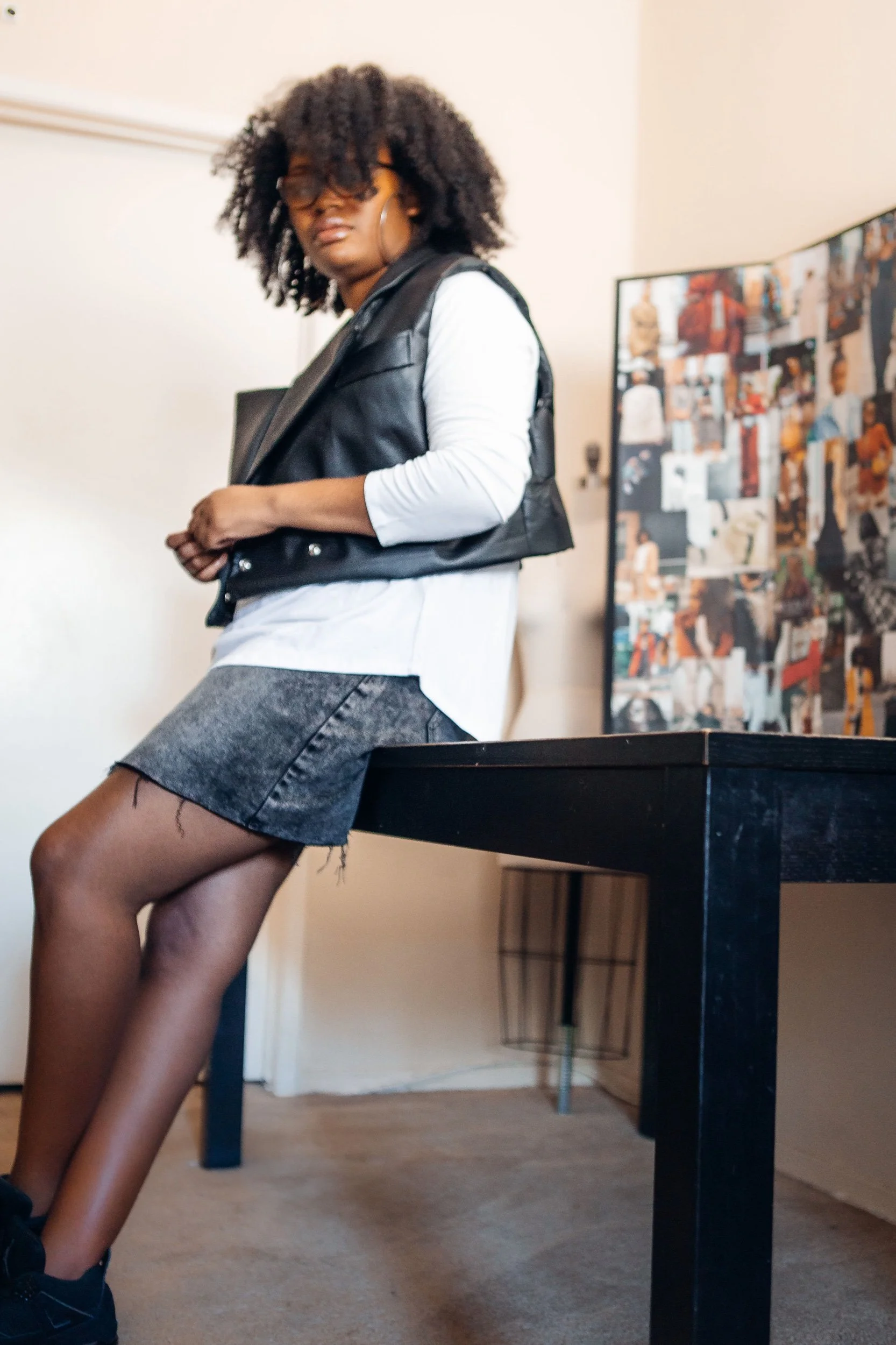5 Things They Don't Teach You at Fashion School
When you’re in college and start the fashion design program, you get so geeked about learning how to make clothes. You think, “This is the start of the rest of my life” and once you get out, you’ll be ready for anything!
Sorry, but this ain’t the case. At least, it wasn’t for me.
I loved doing various projects in school; I took advantage of everything I could. It was a mission to get my hands on as much as possible and to soak up any and all information. After taking several types of design classes, I assumed I was ready for the industry right when I graduated. I wasn’t.
When I got into the industry, I realized what I learned was only a fraction of what I needed to know. Everything else I had to learn on the job.
Here are 5 Things They Didn’t Teach You at Fashion Design School
1. Designing isn’t about you
In college, you have the ability to design whatever you want. There are no boundaries and your creativity can soar. The creative part of fashion design is heavily pushed in school.
It’s completely different in the work force.
While you still use your creativity to come up with concepts, you no longer have that freedom that cultivated your passion. Your designs are funneled through filters that have to please your customer. The customer type dictates the cost of your garment, therefore dictating the fabrication, body detail and art. Your customer type can limit your creative freedom so much that designing can be difficult.
Solution: Research.
Designing isn’t black and white. You know this, that’s why you chose this industry.
The customer for my day job is mass market, so the cost has to be low. When I first dealt with our current accounts, it was a bit depressing. I wanted to do detailed garments but here I was trying to shave pennies off of a T-shirt. What once was the sucky part of my job became the most motivating part. It became a puzzle to try and make something dope with a barely-there cost.
Even if your handicapped with limitations, there’s normally a way around it. You just have to look for it.
2. Real world processes
You’d actually be surprised at the amount of work and personnel that go behind producing one style. When you designed on your own, you were responsible for the concept, visuals, art, patternmaking, sampling, fitting and resampling and then it was on to the next project. In the real word, it flows from trend and market research, concept, evaluation, revised concept, art, CADs, costing, patterning, development sampling, fitting, production, production fittings…and that’s me trying to keep it simple. Not to mention, each one of these steps is handled by a different department.
Yes, a different department! You did all of these steps in school when in reality, you’ll only do one or two and manage the rest of it. It’s a steep learning curve to learn all the steps, systems and people involved, so don’t take this information lightly.
Solution: Learn.
The complexity level of systems can change based on the employer but that doesn’t matter. To stay ahead of the game, you need to jump right in there and learn every single step possible and befriend as many people as possible. This will make your job that much easier to handle. Especially during high stress times.
3. Finding and developing your niche
This one was the hardest one to face for me. Going into college, I wanted to design couture level wedding dresses; coming out of college, I didn’t even know if I wanted to keep designing. Somewhere in those 4 years (the last semester to be exact), I lost myself. I graduated with a huge dark cloud hovering over my head.
After 6 months of soul searching, I got back into designing and after a year, I had a better idea of my target audience. While I still struggle with it a bit, I would have loved to find my niche in college and develop it during those four years with the guidance of professionals on how to push myself.
Solution: Research and Take Advantage while in School
Knowing what you want to do and who you want to design for before you leave school will save you so much time and anxiety. While in school, push your instructor for guidance and help. That’s why they’re there after all.
Learn the different types of markets available and pick one or two that appeal to you. With every project you do, keep these markets in mind and design into them. It’s great practice, you can get feedback from your teachers and your portfolio will be ready to go for you to land a job in that market.
4. Navigating your career
Building off of the last point, having an idea of who you are when you leave school is great to have. While in school, I wasn’t taught the different markets out there or the specific fields like denim and swimwear. I feel if I had a better idea of who I was as a designer, I would have a day job that aligned with my aesthetic more.
Solution: Internships
Take advantage of internships. This is one of my college regrets. I interned in my sophomore year of college and continued to intern at the same place through college. The same place and on the same team. I was blessed to have been hired by the company after graduation but it doesn’t align with me as a designer. I appreciate my job but I don’t love my job and that can make things difficult from time to time.
If you take advantage of internships, you can see what’s available for you in different markets and you won’t have to feel like you’ve settled in the end. You gain experience without the stress of adulting and you may find a job you love.
5. Staying creative
You may have felt burnt out with the late night projects, but doing it for a living is a little different. You’re doing back to back projects while simultaneously working on other projects and sometimes dealing with technical things. It’s really easy to lose your creative drive.
Solution: Find your outlet and inspiration
A two parter! First, your outlet. Work can be physically exhausting or emotionally draining. You need to find that escape to rejuvenate your life. It can be something active like running or dancing; it can be something relaxing like reading or meditation. Whatever it is, find it. Your sanity and stress levels slightly depend on it.
With your stress levels down, find a consistent source of inspiration is your next step. You’ll need to have something you can always go back to that will get your creative juices flowing. This can be music, architecture or art. Find it and revel in it.
While I appreciate everything I learned in my semi-expensive college education and am grateful for the job I have today, it was very evident that my education lacked bits of reality. It didn’t harm me in any significant way but there was a learning curve that I had to adjust to on the job. I guess that’s why they say experience is the best teacher.
Are you in, or have you gone to design school? Do you feel like you were prepared for your industry? Let me know why or why not in the comments below and how you adjusted.





